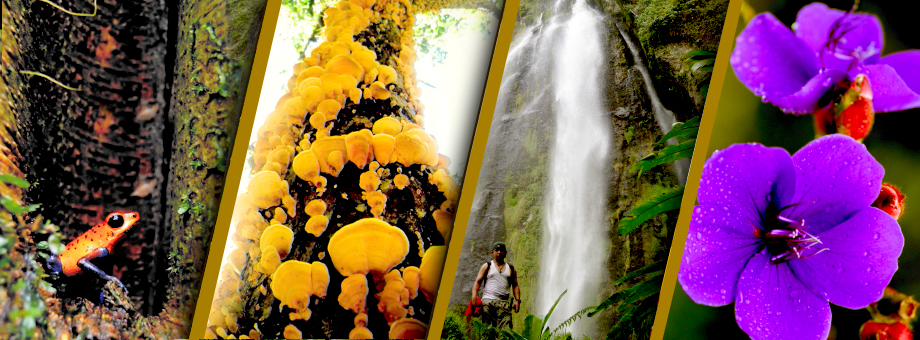Natural Resources
Nicaragua's Natural Resources
Nicaragua possesses a rich and varied nature. Due to its privileged geographic location in the center of the continent, it is a country rich in natural resources. It possesses a wide variety of ecosystems, with its flora and fauna barely explored. If you like nature and exploring virgin territory, Nicaragua is an ideal destination.
Central Northern Region of Nicaragua
The central northern region of Nicaragua contains the highest mountains, with many nature reserves and all the biodiversity of the cloud forest, pine forests, incredible panoramic views, numerous rivers and waterfalls, and coffee and cocoa plantations which effectively function as one more ecosystem.
Caribbean Coast and San Juan River
Nicaragua's Caribbean coast houses 90% of the surface area of protected habitats in Nicaragua and contains the greatest biological diversity and most well conserved habitats in the country. In this region, two large nature reserves are found: to the northeast, the biosphere reserve “Bosawas”, considered to be the largest forest in Central America, and to the southeast, the biological reserve “Indio Maíz” (Indian corn) with access from the San Juan river. Many species of plants and animals make their habitat exclusively in these two large tropical forests.
Aside from impressive forests, the Caribbean coast counts among its ranks numerous coral reefs and a marine ecosystem which can be explored by snorkeling and scuba diving, especially on the paradises that are the Corn Islands and the Pearl Keys.
A little more to the southeast, we find the majestic San Juan river, a natural canal that joins Lake Nicaragua to the Caribbean. This river is an immense wildlife refuge where wildlife can be observed with great ease. Be it on a day tour or a nocturnal one, here you can always be filled with wonder watching incredible insects, mammals, birds, amphibians, and reptiles.
Western Region and Pacific Beaches of Nicaragua
In the Pacific region, nature can also be found at every step. Most representative of this region are the volcanoes, the lagoons, the great lake of Nicaragua, and the magnificent beaches. The beaches are very diverse, from virgin beaches, calm water beaches, beaches with immense waves perfect for surfing, and the protected beaches La Flor and Chacocente, where each year, thousands of impressively sized turtles come to lay their eggs, this spectacle being possible only in six places in the world, two of which are in Nicaragua.
Nicaragua's Pacific beaches are vast, with warm water, and they're sunny nearly year-round. Beyond their natural beauty, these beaches have an excellent infrastructure, with several options for food and lodging. This region is also rich in wetland and dry forest ecosystems.
Lakes and Volcanoes
Nicaragua is popularly known as "the land of lakes and volcanoes." Lake Cocibolca is "the sweet sea" of Nicaragua, as it's the second largest lake in Latin America. It connects to the Caribbean by way of the San Juan river, and it contains: the only freshwater sharks in the world, the archipelago of Granada: a paradise of 350 islets, the largest lake-bound island in the world: Ometepe, an island whose unique natural beauty cannot be denied, as it's made up of two volcanoes which ages ago rose up from the waters, the archipelago of Solentiname: cradle of primitivist painting in Nicaragua and of artisanal balsa wood carvings, the Zapatera island, and numerous lagoons perfect for swimming and relaxing.
The volcanic chain crosses the entire territory from north to south, from the Cosigüina volcano by the Honduran border to the Concepción volcano on the island of Ometepe. Many of these volcanoes are still active, while others have gone dormant, the erupting lava replaced by deep lagoons or even forests in their craters, as is the case with the volcanoes Mombacho and Maderas, the only two cloud forests of the Pacific.
The volcanoes have become popular destinations for hiking, and they can all be scaled, however, the ones that stand out the most are: Cosigüina, San Cristobal, Telica, Cerro Negro, Concepción and Maderas. The Masaya volcano national park is a formation of two volcanoes and five craters; it is the most visited in Nicaragua, and you can drive right up to the edge of the primary crater.

